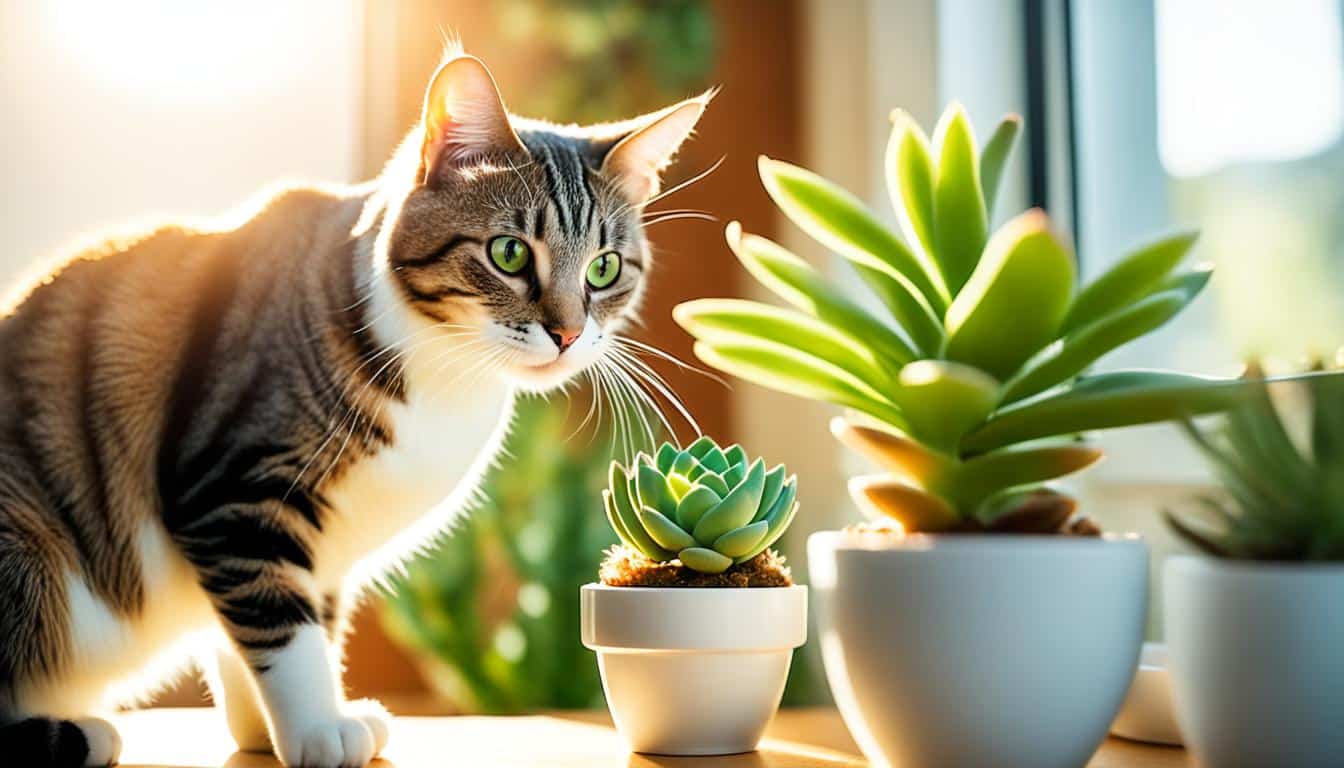Succulents have gained a significant following among plant enthusiasts for their unique aesthetic appeal and low maintenance requirements. However, for cat owners, introducing succulent plants into a shared home raises a pertinent question: can cats safely coexist with these decorative flora? Understanding the potential toxicity and safety tips regarding succulents is vital for safeguarding your feline friends. This article delves into the intricate relationship between succulents and cats, outlining essential safety measures and clarify which varieties are less hazardous.
Succulents, characterized by their thick, fleshy tissues that store water, come in various shapes and sizes. These plants not only enhance the ambiance of your living space but also surprise many with their resilience. Yet, the intricate allure of these botanical specimens can lead to an unsuspecting hazard for curious cats. As creatures of exploration, cats are prone to nibbling on appealing greenery, which can be detrimental to their health if the plants are toxic. With understanding and vigilance, pet owners can enjoy the beauty of succulents while keeping their cats safe.
The crux of the matter lies in the fact that not all succulents are created equal when it comes to toxicity. In contradistinction to other common houseplants, certain succulent species contain compounds that could elicit various adverse reactions in cats. A definitive understanding of these toxic and non-toxic varieties is paramount for any pet owner who wishes to incorporate them into their home environment.
In this exploration of the succulent world, we will dissect the categorization of these plants, scrutinize their toxicity, and furnish pet owners with strategies that promote a harmonious household.
Assessing the Toxicity Spectrum of Succulents
The first step in ensuring the safety of your feline companion is to be educated about the potential dangers associated with specific succulent varieties. While many succulents are non-toxic and pose no significant threat to cats, some species can lead to serious health complications if ingested. Common succulents that are toxic to cats include:
• Euphorbia (Spurges): This diverse genus contains milky latex that can cause skin irritation and gastrointestinal upset if ingested.
• Aloe Vera: While widely recognized for its medicinal properties for humans, aloe is toxic for cats and can lead to vomiting, diarrhea, and lethargy.
• Jade Plant (Crassula ovata): Though visually captivating, jade can trigger vomiting, depression, and in some cases, bradycardia in cats.
Conversely, there are numerous succulent varieties deemed safe for cats. These include:
• Haworthia: An easy-care succulent characterized by its rosette shape that poses no toxicity risk to felines.
• Christmas Cactus (Schlumbergera): This festive plant adds vibrancy while being non-toxic.
• Burro’s Tail (Sedum morganianum): As a trailing succulent, it is both non-toxic and offers a striking aesthetic.
Understanding which succulents can coexist with your cat is essential. Ensuring the safety of your pets requires continuous awareness regarding the plants you bring into your home.
Creating a Safe Environment for Your Furry Friends
In addition to selecting non-toxic succulent varieties, there are practical strategies for minimizing the risk of a hazardous encounter with your feline companions. By implementing a few simple precautions, you can craft an environment that caters simultaneously to the needs of succulents and your pets.
• Placement Matters: Consider placing succulents in areas that are difficult for your cats to access. Hanging planters or shelves out of reach can significantly reduce the chance of curious paws disturbing your plants.
• Deterrents: Utilize natural deterrents to keep cats away from succulent arrangements. Citrus peels, for example, can repel felines, as their scent is typically off-putting to cats.
• Supervised Interaction: If you notice your cat showing an interest in your plants, allow brief supervised interactions. This can help you evaluate your cat’s behavior and prevent any potential mishaps.
• Alternative Choices: If you notice your cat has developed a taste for plants, consider providing them with safe alternatives. Cat grass or catnip can sate their cravings while keeping them away from harmful succulents.
Recognizing Behavioral Patterns in Cats
Beyond safety measures, understanding your cat’s behavior regarding plants can illuminate their motivations. Cats may be drawn to plants out of curiosity, boredom, or even instinctual hunting behavior. Each cat exhibits different levels of interest in chewing or tossing around plants. Observing these inclinations can help you tailor your approach to managing plant exposure.
Some feline companions may benefit from outdoor time to engage their innate hunting instincts. Incorporating elements into your cat’s environment, such as climbing trees, interactive toys, or puzzle feeders, can redirect their focus from succulents and maintain their mental acuity.
Embracing Succulents in a Pet-Friendly Home
In conclusion, integrating succulents into your home as a cat owner is feasible provided you are equipped with the proper knowledge and strategies. Awareness of which plants are safe, strategic placement, supervision, and consideration of your cat’s behavioral tendencies can enhance the relationship between your pets and your beloved plants. Owning both a vibrant plant collection and a happy cat is achievable with informed decisions and proactive measures. As this enchanting world of succulents beckons, understanding their compatibility with your feline companion is the key to a thriving, aesthetically pleasing household.





Leave a Comment